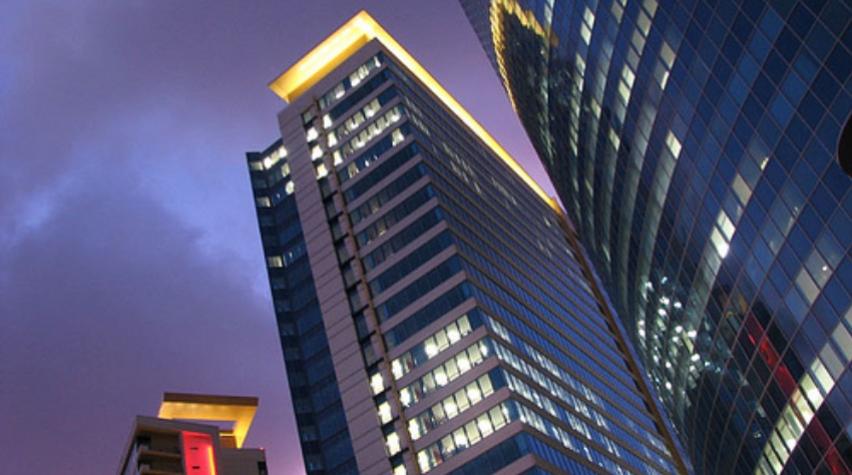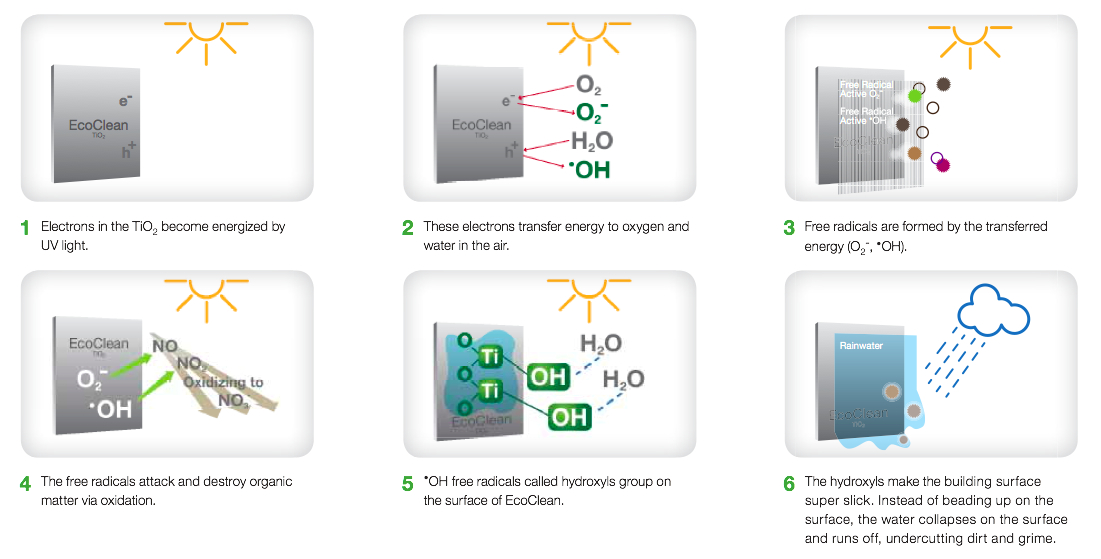
As society continues to evolve and it becomes more of struggle to find spare time to do daily chores like cooking and cleaning, wouldn't it be nice if things simply cleaned themselves? You can stop dreaming, because it's already a reality--at least for buildings--thanks to an architectural product from Alcoa called EcoClean panels. In a recent interview with Forbes, Craig Belnap, president of Alcoa Architectural Products, said "Candidly, when you first learn about this technology you think, 'Wow you've got to be kidding.'" Buildings are exposed to various types of organic material ranging from bird droppings to vehicle emissions. More specifically, NOx (nitrogen oxides), which are emitted during thunderstorms, and the combustion of fuel continuously make buildings dirty and also pollute the air we breathe. Nitrogen oxides are also the primary component of smog. Using Alcoa Architectural Products' titanium dioxide (EcoClean) coated aluminum panels (Reynobond), buildings are now able to clean themselves and the air around them.
The chemistry behind it
How does a building covered in organic waste clean itself as well as the surrounding air? The answer lies in the chemistry behind this process: electrons in the titanium dioxide attain a higher energy state when exposed to sunlight. These electrons then transfer energy to water and oxygen in the air, forming free radicals (hydroxyl radicals and superoxide anions). Due to the powerful oxidizing capabilities of these radicals, they attack any organic material on the panel's surface and in the area (and air) surrounding it. The superhydrophilicity of titanium dioxide creates a water-loving environment. As such, when it rains, the water doesn't bead on the surface. Instead, it collapses and runs evenly off the building, taking the broken-down organic material and nitrates along with it. It is important to note that even the slightest amount of rain or humidity in the air can create this effect.

Alcoa predicts the product will result in a 4% to 5% premium over the installed cost of conventional versions, a price Alcoa believes customers will be willing to pay for the long-term return on investment as well as the boost to their brands. There are currently two pilot projects using Reynobond panels with EcoClean underway in North America and Europe.
Air-cleaning qualities
An interesting fact is that 10,000 square feet of Reynobond with EcoClean has approximately the same capability of cleaning air as 80 trees. This is equivalent to make up for the smog produced by the harmful emissions of four cars every day. According to Craig Belnap, there are "14 billion square feet of buildings in North America and Europe. If a fraction of those surfaces use the EcoClean product, it would be the equivalent of planting several million trees." Along with its environmental benefits, the panels will result in lower maintenance costs for owners and a consistently cleaner image for the building over time.



Comments
Interesting to know how this works on existing buildings? Does the entire architecture of the building need to be change?
Amazing. There is no end to innovation.
Yes.